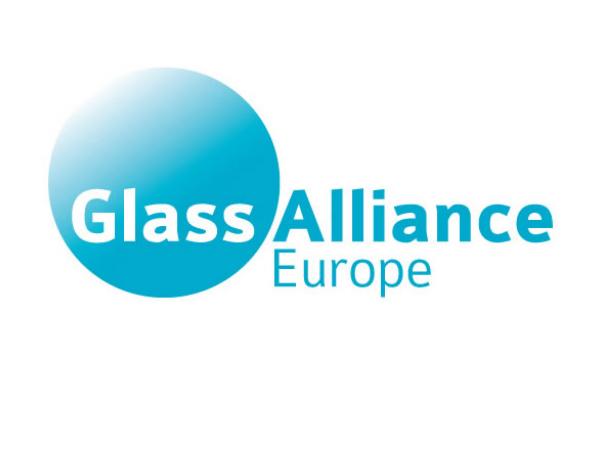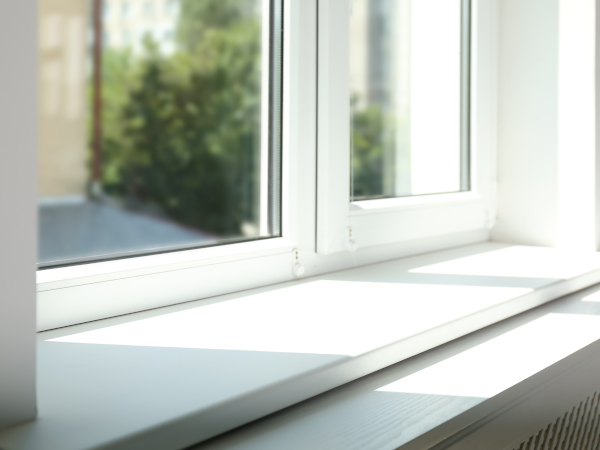
Date: 1 February 2016
The reform was awaited by Europe’s glass industries which are involved in the shift toward a low carbon economy through the decrease of their own specific carbon emission as well as through the contribution of their products.
Glass Alliance Europe considers that the initial proposal is a good basis for discussion, but improvements are needed to provide the European Union with a framework which will meet its key objective of “promoting reductions of greenhouse gas emissions in a cost-effective and economically efficient manner”1.
(1 Recital 1 of the European Commission proposal for a directive amending Directive 2003/87/EC “to enhance cost-effective emissions reductions and low-carbon investments” – COM(2015) 337 final.)
In the absence of a global trading system and comparable sharing of industrial effort, Glass Alliance Europe advocates an EU trading system allowing for full carbon protection of sectors at genuine risk of carbon leakage, coupled with free allocation of allowances for all installations at the level of the benchmark.
These two principles are essential to make Europe an actor of the transition towards a low carbon society and to avoid carbon leakage in relation to the carbon footprint of European citizens.
Key improvements needed for a successful reform of the EU ETS post 2020
The reformed methodology for assessing the sectors deemed to be at genuine risk of carbon leakage is effective and shall be supported.
However, to avoid any detrimental ambiguity, the methodology should be improved by clarifying in the directive that both direct and indirect emissions continue to be included in the amended carbon leakage metrics, and that the assessment of industries at risk of carbon leakage remain valid for the entire trading period.
Additionally, the future directive should preserve the possibility for a sub-sector to use a quantitative and/or qualitative assessment at a more disaggregated level, regardless of any threshold.
A periodic revision of the benchmark (average of the 10% most efficient installations in the EU) based on real and verified industrial data will ensure that free allowances are gradually reduced at levels that reflect the technology developments and deployment in each sector.
There is no need to add an additional and new correction on benchmarks values (i.e. flat rate reductions). It would not further incentivise technology deployment but would generate even more disconnection between free allocation and industrial realities.
Free allocation to industries exposed to risks of carbon leakage should be fully connected with Europe’s industry needs: best performers should receive free allocations to cover the entirety of their production needs. In order to maintain the total EU cap on greenhouse gases and allow European glass industries to remain competitive, the introduction of a fixed 57% auctioning share should be reviewed either by removing the fixed auctioning share, or by lowering it or by adding a free allocation buffer to the system by using allocations available in the MSR or a new reserve.
Carbon leakage
1) In Glass Alliance Europe’s view, the European Commission has been successful in reforming its methodology for assessing the sectors deemed to be at genuine risk of carbon leakage by taking as references the carbon intensity and trade intensity of the sectors, independently of a carbon price. The fixed carbon price in the current methodology has been heavily questioned in policy debates and the new methodology provides a clear and scientifically grounded identification of the sectors in need of an effective level of protection.
2) Since energy intensive industries, such as the glass industries, are characterised by long investment cycles, the system needs predictability and stability. Therefore, the assessment of industries at risk of carbon leakage must remain valid for the entire trading period. Similarly, the directive should clearly indicate that both the direct and indirect emissions continue to be included in the amended carbon leakage metrics as it is the case in the current directive and as requested by the Council in its October 2014 conclusions2.
3) Glass Alliance Europe considers that, as is the case under the current legislative framework, the future directive should preserve the possibility for a sub-sector to use a quantitative and/or qualitative assessment at a more disaggregated level (i.e. Prodcom 6 or 8), regardless of any threshold. There are examples where the assessment at NACE4 fails to limit its focus on the sole relevant industrial activities that are falling under the scope of the EU ETS such as in the flat glass sector. Additionally, there are cases where very different sub-sectors are grouped together at NACE4 level. Depending on the respective sizes of those sub-sectors, and their respective trade and carbon intensities, the 0.18 threshold set in the European Commission’s proposal might not be exceeded at NACE4 level, while some sub-sectors within the group, such as in the case of the glass fibre sector, may be well above the 0.2 threshold when assessed on their own, and in need of protection.
4) In Glass Alliance Europe’s view, the concept of a “tiered approach” is not a viable alternative to the European Commission proposal3. This mechanism would be inefficient and counterproductive, in addition to other pitfalls identified by the European Commission itself. Firstly, the capacity of this mechanism to provide a significant amount of additional free allowances to sectors supposedly most exposed is limited because these sectors are by far the principal greenhouse gases emitters4. Therefore, a tiered approach would only redirect a very small incremental amount of free allowances. Secondly, and most worryingly, implementing a tiered approach carries the unacceptable risk of undermining the situation of the European industrial sectors most in need of protection. A tiered approach would mean these receiving a decreasing free allocation until their competitive situation results in them being upgraded to a category with a higher level of protection. In other words, rather than being preventive, the carbon leakage protection system would become curative and hence would not fulfil its aim as the economic damage would already have taken place.
(2 European Council (23 and 24 October 2014) Conclusions on 2030 Climate and Energy Policy Framework, SN 79/14.
3 At the core of the “tiered approach” concept is the belief that sectors exposed at risk of carbon leakage do not all need the same level of protection, and that reducing the protection from one sector will benefit another considered more exposed.
4 Iron and steel, cement, refineries, chemicals and fertilizers account for around three quarters of industry emissions covered by the EU ETS.)
Thirdly, a tiered approach would introduce distortion of competition between sectors competing in the same market (e.g. packaging) if the levels of free allowances allocated to these sectors differed. Therefore, Glass Alliance Europe supports the European Commission current proposal considering that a “tiered approach” is detrimental to the objective of preventing carbon leakage in the exposed sectors, in addition to being difficult to implement and a possible source of disruption to competition between different industrial sectors active in the same markets.
Rules on free allocations to sectors exposed to risk of carbon leakage
1) The allocation of free allowances at the level of the benchmark is key, as it allows Europe’s glass industries to remain competitive, supports innovation, strengthens their ability to invest in the efficiency of their installations, and maintains investment capacities. The allocation of free allowances therefore drives innovation and emissions reduction while ensuring installations’ competitiveness. Free allocation to industries exposed to risks of carbon leakage should be fully connected with Europe’s industry needs and should not be reduced by the application of additional correction factors – notably any cross-sectoral correction factor (CSCF).
2) In Glass Alliance Europe’s views, installations in sectors covered by a product benchmark and at risk of carbon leakage must receive free allocations at the level of the benchmark to ensure an adequate protection for all European installations within an industrial sector. Product benchmarks must be based on the average of the 10% most efficient installations in the EU and should not be adjusted by way of “flat rate” reductions. The periodic revision of the benchmark based on real and verified industrial data will already ensure that free allowances are gradually reduced at levels that reflect the technology developments and deployment in each sector, and thus the ability of each industrial sector to improve its performance in terms of GHG emissions. Adding a new correction factor on the benchmarks (i.e. flat rate reductions) will not further incentivise technology deployment but will generate even more disconnection between free allocation and industrial realities. In practice, sectors which have already invested in low-carbon technologies to improve their installations by using state-of-the-art technologies, such as the glass industries, will be penalised by always lower benchmarks artificially generated by flat rate reductions.
3) The Commission proposal goes in the right direction as it proposes that allocation decisions will be made for a period of 5 years instead of 8, thus bringing the system closer to the recommendation formulated by the Council in its October 2014 conclusions, which stated that future allocations should “ensure better alignment with changing production levels in different sectors”. The principle of a rolling year for the production baseline would help better align free allowances to recent production levels and thus avoid an imbalance between the allowances market and the level of greenhouse gases emitted by manufacturing industries. Therefore, Glass Alliance Europe considers the system should become even more dynamic and proposes that allocation be based on the production of the year Y-2 to further reduce the risk of over-allocation.
Distribution of allowances
1) The introduction of a fixed 57% auctioning share will have a strong impact on the European glass industries’ competitiveness. Introducing a fixed auctioning share entails de facto that the free allocation share is also fixed, and that the number of free allowances declines at the same pace as the total cap (2.2% per year). The combination of these elements will deprive all glass manufacturing sites of some of their free allowances. Subsequently, even the best performers would have to purchase allowances at a constantly increasing price or reduce production, which will reduce their competitiveness. The failure to link CO2 reduction targets to the reduction potential of each sector will inevitably generate extra costs for industries with only limited Greenhouse Gases (GHG) reduction potential, and will increase the risk of relocation outside the EU borders. To Glass Alliance Europe there are only three alternative ways of tackling this issue, while maintaining the total EU cap on greenhouse gases:
Option 1 “flexibility in distribution”: The distribution of allowances could be based on a flexible approach where sectors at risk of carbon leakage are first allocated free allowances at the level of the benchmark, and the rest is auctioned. This will make any correction factor redundant and preserve EU industry competitiveness. Additionally, this approach would not decrease revenues for Member States for two reasons. Firstly, it would increase the carbon price because auctioned allowances would become scarcer. Secondly, the Market Stability Reserve (MSR) is expected to at least triple the carbon price from about 6€/t to 20€/t.
Option 2 “revised fixed auctioning share”: If a fixed auctioning share was to be maintained, the 57% could be lowered to a level that will ensure that best performers in a sector at risk of carbon leakage do not face extra costs. As for the first option, it has the benefit of preserving EU industry competitiveness without adverse effects on Member States’ revenues.
Option 3 “free allocation buffer”: If the 57% fixed auctioning share was to be maintained, the impact of the CSCF could be compensated for in sectors exposed to carbon leakage by providing them with additional allowances, from the MSR5 or from a new reserve.
In the context of an ever decreasing greenhouse gas cap and much higher price of carbon, tackling the fundamental problem of an increasing shortfall in free allocations will become inevitable in the medium term.
2) Glass Alliance Europe welcomes the fact that a reserve is constituted with 250 million unallocated allowances from the Market Stability Reserve for new entrants and for production increase, and not only for “capacity increase” as in the current directive. This proposal has the potential to allow industry to grow during an upturn in the economy while respecting the total EU cap on greenhouse gases. However, to be effective, the thresholds in terms of production increase to be granted access to the reserve need to be clearly defined by the legislator. In light of the importance of this mechanism and its potential benefit for the European industry, Glass Alliance Europe calls on the European Parliament and Council to include this item in their discussions on the legislative framework proposal.
3) Glass Alliance Europe welcomes the extension of the innovation support to industrial projects. However, this funding for innovation should not come from cutting or limiting free allocations since that would be detrimental to protecting against carbon leakage. Revenue from auctions should be reinvested to support energy efficiency or low carbon technology, as foreseen in the ETS Directive, and be used by Member States to stimulate economic growth and relevant R&D investments. Innovation funding under the EU ETS should be allocated to energy intensive sectors listed in Annex 1 of the Directive and should be available in an appropriate form that promotes decarbonisation projects in these industries.
(5 The MSR will be fed partly with allowances earmarked for auctioning and partly with allowances earmarked for free allocation (e.g. unallocated allowances from phase III).)
Implementation rules
Glass Alliance Europe considers that a number of important elements with a clear political dimension are left aside in the debate on the directive. However, some of the elements proposed to be regulated via delegated acts are actually essential to the functioning of the ETS and would require the European Parliament and Council to be involved beyond sole scrutiny.
In Glass Alliance Europe’s view, the following elements are essential and should be clearly defined in the directive:
- Volumes, timing, and sequencing of auctioning of allowances (Article 10(4))
- Rules for harmonised free allocation (Article 10a(1))
- Support of innovation (Article 10a(8))
- List of sectors exposed to carbon leakage (Article 10b)
- Inclusion of other activities and other Greenhouse Gases (Article 24)
- Rules for projects not covered by the ETS (Articles 22 and 24a)
About Glass Alliance Europe - EU Transparency Register N° 74505036439-88
Europe is the world leader in glass making. The glass industry comprises more than 500 plants providing 500,000 direct and indirect jobs. Glass is a unique and inert material made from abundant natural resources and fully recyclable. It is a key contributor to the EU objectives of a low-carbon, energy efficient and circular economy, and a key enabling material for essential supply chains, such as the pharmaceutical and health sector, the food and drink industry, buildings and construction, automotive, luxury goods and perfumes, electronics, optics, etc.
For more information http://www.glassallianceeurope.eu/
 600450
600450







Add new comment